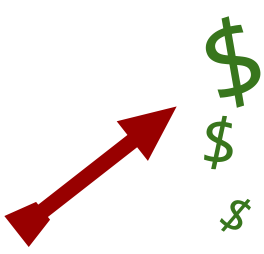I mentioned in a previous entry that a significant amount of what a product manager does is recommend strategy that contradicts basic instincts. I listed four examples of such instincts.
One of the instincts I failed to mention, however, was the seemingly unstoppable temptation to lower prices or offer temporary discounts to stimulate demand for a company's product. In most cases, a good product manager will advise the opposite - maintain a stable price that reflects the value of the product rather than offer discounts.
I've mentioned that John Moore, in his Brand Autopsy blog, recommended that company executives visit the Brand Autopsy Discount Detox Center when they become addicted to price discounts.
 Skimming through one of my favorite classic books on marketing, Al Ries and Jack Trout's Marketing Warfare, I recently came across these passages (excerpted from pages 90-92):
Skimming through one of my favorite classic books on marketing, Al Ries and Jack Trout's Marketing Warfare, I recently came across these passages (excerpted from pages 90-92):
One of the instincts I failed to mention, however, was the seemingly unstoppable temptation to lower prices or offer temporary discounts to stimulate demand for a company's product. In most cases, a good product manager will advise the opposite - maintain a stable price that reflects the value of the product rather than offer discounts.
I've mentioned that John Moore, in his Brand Autopsy blog, recommended that company executives visit the Brand Autopsy Discount Detox Center when they become addicted to price discounts.
"Psychologist Robert B. Cialdini tells the story of a jewelry store in Arizona that couldn't sell an allotment of turquoise pieces. Just before leaving on a trip, the owner scribbled a note to her head sales person - 'Everything in this case, price x 1/2,' - hoping to get rid of the jewelry, even at a loss. When she returned a few days later, every article was gone. But because the salesperson had read the 1/2 in the scrawled message as a 2, the entire batch had been sold at twice the original price, not half. For many products, high price is a benefit. The price adds credibility to the product."And later:
"There are two good reasons why high price represents more of a marketing opportunity than low price. One is the tendency of the prospect to equate quality with price. 'You get what you pay for.' The other is the potential for higher profit margins with a higher price. The higher margins allow you to finance the critical 'pursuit' stage of a flanking attack."Brand management isn't about instincts, it's about well-established branding principles.
Comments